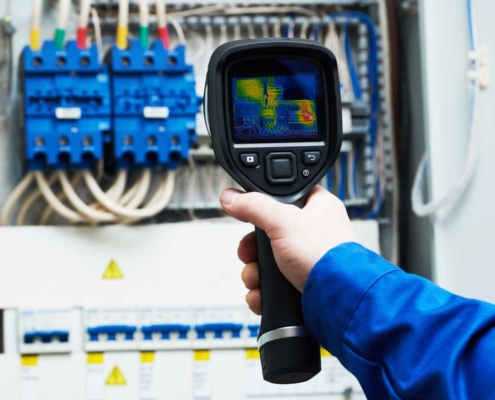Thermal Imaging
Infrared thermal imaging is an advanced, non-invasive technology that helps uncover hidden issues in your home. By detecting subtle changes in surface temperature, a thermal imaging inspection reveals problems that may not be visible to the naked eye, saving you time, money, and stress down the road.
What Our Thermal Imaging Inspections Include
During an infrared home inspection, our inspector will:
- Identify insulation gaps or deficiencies in walls and ceilings.
-
Detect hidden moisture problems that could lead to mold or structural damage.
-
Check around windows and doors for air leaks and thermal efficiency issues.
Why Choose Infrared Thermal Imaging?
Standard inspections can only reveal what’s visible. Our advanced thermal imaging cameras allow us to see more, uncovering hidden problems before they become costly repairs. Whether you’re buying a home or wanting to do a home maintenance inspection, an infrared inspection provides peace of mind and valuable insight.
📞 Contact us today to schedule your thermal imaging inspection in Charlotte, Concord, Matthews, or the surrounding areas. Ask about adding an infrared scan to your home or commercial property inspection!
Top 5 Defects Found during a Thermal Imaging Scan
Leaks
The general home inspection is a non-invasive, visual inspection only. Leaks in the roof and/or walls that normally would not be visible show up during a thermal scan.
Missing Insulation
The scan allows us to see where installation is missing in the walls and/or ceiling. This affects energy efficiency within the home and would not be visible since drywall covers it.
Hot Electrical Wiring
This can be found at a fixture, light wall switch / receptacle or in the walls or electrical panel, but would be missed since it is not visible during a general home inspection.
Plumbing Leaks
Sometimes leaks are not yet visible. Using thermal imaging allows the inspector to find these leaks as well as finding the source of a leak behind the drywall.
HVAC Issues
A couple of common HVAC issues we find include holes in the ductwork and condensation line back ups.

